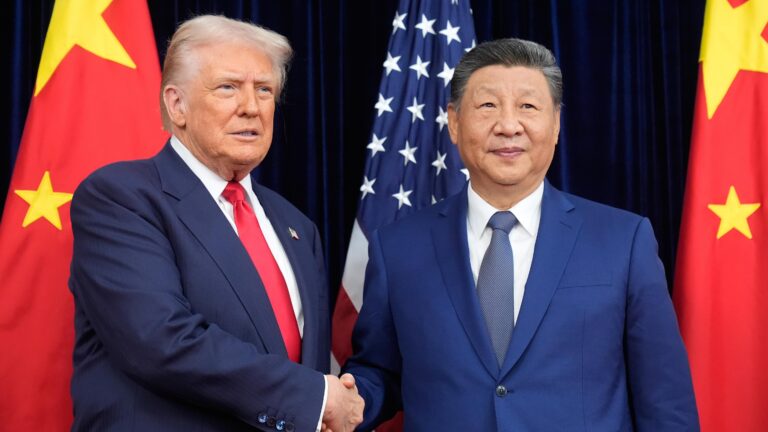In a significant development amid ongoing trade tensions, the United States and China have declared a truce in their protracted tariff dispute, following a high-profile meeting between President Donald Trump and Chinese President Xi Jinping. Speaking positively after their encounter, President Trump described the discussions as “an amazing meeting,” signaling a potential thaw in the economic standoff that has rattled global markets. This article provides live updates on the evolving situation, tracking official statements, market reactions, and what the emerging dĂ©tente could mean for the future of US-China trade relations.
Trump and Xi Announce Trade Truce Signaling Potential Shift in US-China Relations
In a significant development, President Trump and President Xi Jinping have agreed to a temporary pause on escalating tariffs, signaling a potential thaw in the prolonged US-China trade tensions. During their recent meeting, both leaders expressed optimism about working towards a more balanced trade relationship, with Trump describing the encounter as “amazing” and highlighting mutual commitments to avoid further economic disruptions. This truce paves the way for renewed negotiations on key issues such as intellectual property rights, market access, and technology transfer.
Analysts suggest that this gesture could signal a strategic pivot, potentially easing volatility in global markets. Key takeaways from the agreement include:
- A 90-day tariff freeze stopping additional duties on both sides
- Commitment to resume trade talks focusing on structural reforms
- Enhanced communication channels to prevent misunderstandings
- Targeted cooperation on intellectual property protections and agricultural trade
| Aspect | US Position | China Position |
|---|---|---|
| Tariffs | Maintain current rates; no new escalations | Halt planned increases; review existing duties |
| Technology Transfer | Enforce stricter protections | Commit to voluntary steps |
| Agricultural Imports | Expand US exports to China | Increase purchase commitments |
Detailed Analysis of Tariff Impacts on Global Markets Following the Truce Declaration
The recent truce declaration between the US and China has initiated a notable shift in global market dynamics, particularly concerning tariff policies. Following the agreement, key industries that were hit hardest by the earlier tariff escalations, including technology, agriculture, and manufacturing, are now experiencing tentative relief. Markets responded positively, with stock indices showing immediate gains, reflecting optimism about reduced supply chain disruptions and cost pressures. However, analysts caution that the long-term impact depends heavily on the implementation details and the durability of this truce.
Among the critical outcomes observed are:
- Reduction in tariff-related price volatility: Commodity prices are stabilizing as customs duties on critical raw materials are temporarily eased.
- Renewed trade negotiations: Both nations are expected to engage in detailed talks to further address intellectual property rights, technology transfers, and market access.
- Market sentiment boost: Investor confidence has surged, influencing capital flows into emerging markets affected by the trade war.
| Sector | Pre-Truce Tariff Rate | Post-Truce Adjustment | Market Reaction |
|---|---|---|---|
| Technology | 15-25% | 5-10% | Positive |
| Agriculture | 10-30% | Suspended on select goods | Moderate |
| Manufacturing | 20% | Reduced to 10% | Optimistic |
Experts Recommend Strategic Adjustments for Businesses Amid Evolving Trade Policies
Industry leaders are urging companies to revisit their supply chain frameworks in light of the latest US-China trade developments. Experts emphasize that agility in sourcing and diversification of suppliers can serve as critical buffers against future policy fluctuations. Businesses are encouraged to:
- Expand vendor pools beyond traditional markets to mitigate geopolitical risks.
- Invest in technology to improve real-time trade compliance monitoring.
- Enhance cross-border communication channels for proactive risk management.
Financial analysts also highlight the importance of exploring tariff impact scenarios through quantitative modeling. A recent industry assessment tabled key adjustment strategies tailored for different operational scales, showcasing how companies can optimize both cost and regulatory alignment:
| Business Size | Primary Strategy | Expected Benefit |
|---|---|---|
| Small | Localized sourcing | Lower dependency costs |
| Medium | Supplier diversification | Improved supply resilience |
| Large | Technology-driven compliance | Faster tariff response |
Key Takeaways
As the United States and China step back from escalating trade tensions with a declared truce, markets and observers alike will be closely monitoring the developments stemming from President Trump’s recent meeting with President Xi. While the agreement marks a temporary easing in the trade conflict, questions remain about the long-term implications for global commerce and economic stability. Yahoo Finance will continue to provide timely updates as both nations navigate the next stages of this complex and evolving relationship.




